We talk shop with six design curators at the top of their games
Making History
What’s on the minds of today’s top design curators? We recently approached six experts from around the globe to find out just that. From the designers, movements, and projects that presently fascinate them to predictions for the future of design, the importance of context, and the role of institutions in the larger design conversation, we’ve got the lowdown. How does one actually go about building a collection? How is the design landscape changing? And how does one really engage a growing, educated design audience in a world full of media competing for our attention? Read on for insights from the individuals who, through their day-to-day efforts, are writing the design history books of tomorrow.
Andrea Lipps, Assistant Curator & MOBIUS Fellow at the Cooper Hewitt, Smithsonian Design Museum, New York
AC: In general, how do you select the pieces you think will be important in the future?
AL: I look for work that, whether through its concept, process, material use, or form (or some combination thereof), does something in a new way—innovating, pushing the dialogue and field forward.
AC: Surveying the contemporary design landscape from the past 2 years, what design(s) do you believe NEED(S) to be in an institution, and why?
AL: Digital design needs to be collected—visualizations, apps, interfaces, software, experiments, even Twitter feeds (why not Twitter itself?). A large segment of contemporary design culture exists in the digital realm. It is critical for current and future generations to understand this practice and its history within the broader design landscape, and for museums to make it available to future researchers. Collecting digital design remains a recognized challenge to institutions. What to collect (i.e. source code? versions?), how to preserve it, how to meaningfully display the experience of using the collected design in years to come? Museums are great at collecting tangible objects to be stored on shelves and in archival boxes. We’re not so great at collecting the intangible. Cooper Hewitt is slowly acquiring digital design. Thanks to efforts by Seb Chan and Aaron Strauss Cope from our Digital and Emerging Media team, we’ve acquired the Planetary app, including its source code and process files. We recently acquired Aaron Koblin’s data visualization, Flight Patterns, and crowd-sourced digital project, Ten Thousand Cents. But we have a long way to go.
AC: What major obstacles do design institutions face today? What major strengths do they have?
AL: Design institutions undoubtedly offer an important platform for the presentation of work and ideas. Yet these institutions traditionally operate at a slower pace than the torrent of activity today. It takes time to thoughtfully and meaningfully research and mount exhibitions, write and publish books, and acquire objects. How can we establish a nimble practice that can help us keep pace with the seismic shifts in culture and technology today? There are spaces in which we can innovate around these processes in our institutions. For instance, the V&A has experimented with rapid-response collecting, a strategy to enable their museum’s collection to respond very quickly to events relevant to design and technology. Cooper Hewitt, before its renovation, experimented with what I like to think of as rapid-response exhibiting with the Quick Take series, bringing spontaneity into the galleries. It would be exciting to see an iteration of this continue to enable the means to bring new, important work into the museum fast. [Curator] Paola Antonelli’s successful online exhibition, Design and Violence, on MoMA’s website, catalyzed a range of thinking and rich response about objects outside the gallery walls. We need to ensure funding structures and resources enable such nimble institutional practice.
AC: Which design movements or trends are you most interested in right now?
AL: I’m interested in design and food, what in many ways seems a nascent movement but is, perhaps, one of the oldest and most spontaneous of human activities. I’m interested in new material development and the impact it will have on the objects and experiences in our lives to come. I’m interested in new design business models in which designers not only design objects, but oversee manufacturing, fabrication, sales, and distribution directly to consumers. I’m interested in continued developments in 3D printing, particularly with materials new to the technology. It’s an exciting time to be a contemporary design curator, to say the least.
Zoë Ryan, Chair and Curator of Architecture & Design at The Art Institute of Chicago
AC: Do you think that institutions are leading or following the design discourse today?
ZR: I think it should always be a combination. One of the interesting things about being a curator is that it’s about really going deep; projects can take a long time. We’re not just getting one or two works from someone, but really following where they go, and also understanding, with young talent, when is the right time [to collect]. What is the right work to acquire? What’s going to show a pivotal moment in someone’s practice? People look to museums for knowledge and expertise, and that takes time.
Sometimes, though, we have to make a [quicker] judgment. Like the Obama campaign logo; I wasn’t going to wait to get that. You just know that that is going to be very important in telling a story about a particular moment.
It’s a balance between a kind of slow exhibition-making process—similar to the slow food approach—with a more experimental approach, which is about providing a platform for architects and designers to use the museum as a forum to present and develop their own ideas. In that way, the museum becomes a launch pad.
AC: When curating shows, whom do you think of as your audience?
ZR: Millions of people come through the door, from avid fans to one-time museumgoers, children to adults. So for every exhibition, you’re working to create all kinds of programming and different points of access.
Every exhibition should be designed differently as a reflection of that subject matter. It’s about bringing that work alive. For example, when we did the Konstantin Grcic [Decisive Design, 2009] show: One of the biggest criticisms we get as curators is, “How do I know that this piece, this bench or chair, for example, is good design? I can’t touch it or sit on it.” And when you’re working with someone like Konstantin—whose work often looks awkward or downright uncomfortable—we decided, since his work is mass-produced, why can’t people sit on it? So we got one of every single piece of furniture he’d made for that day so people could try out for themselves in the gallery.
And who would have thought sitting on furniture would be so exciting? It was fun to see people come together and test them out; people feel a sort of freedom to stake a claim and talk about their experience and look to their neighbor—whether someone they know or a stranger—and comment about what they’re experiencing. For me, it was interesting because the whole vibe of the gallery changed. When people can have dialogues about something, I think that helps break down barriers.
I’m really interested in the social experience of being in a museum. Sometimes it’s as fascinating to look at other people looking at artwork and to see their reactions, as it is for you to look at artwork. You learn so much. It’s like being at the cinema, and experiencing a film together. Although you’re all sitting in the dark, you’re very aware that other people are there. They’re laughing at particular moments or having an emotional experience or talking it through or whatever, and you’re very aware of that. It adds another dimension to your experience of that film. I think the same is very much true in a gallery.
AC: Surveying the contemporary design landscape from the past few years, is there a specific piece or series that you believe needs to be in an institution, and if so, why?
ZR: I’m really interested in following peoples’ careers, and adding work so we can start to tell a [comprehensive] story. We have one of the most extensive collections of work by Konstantin Grcic, for example. To me, he’s one of the most important industrial designers working today. So I always look to collect pieces he’s done; some of the furniture he’s worked on recently with Vitra for example, these lounge chairs that bridge outdoor-indoor are very important, because he’s using this very high tech material in furniture application, and he spent years developing it. That was quite pertinent to our collection, as we have this robust body of work for him, going back to his earliest projects, and the very early rethinking of typologies, all the way up to the present day.
In terms of material exploration, I think Formafantasma are really important. We recently bought their Botanica vase. They’re interesting in terms of thinking about handmade processes, sustainable materials, and our limited resources. They think about very challenging, very critical issues, in a sensitive and thoughtful way. It’s not necessarily about one piece or another; it’s really about the body of work that builds on itself from one piece to the next.
Hella Jongerius is another great example; we brought her Bubble Table [aka Sphere Table, 2013] into the collection, which was originally for the UN [North Delegates’] lounge in New York. For me, that piece is very interesting because it harks back to the ’60s, the ’70s, the Italian experiments, Joe Colombo, and others who were exploring living units for the home that took on different functions. [It’s] a more contemporary exploration of how you create modular systems for multiple uses, or how you create privacy or openness, or bring people together. So for us that was an interesting story.
Maria Cristina Didero, Independent Design Curator
AC: What are the roles of design institutions today?
MCD: Institutions should give overviews, allowing people to draw information from them. They should provide an original experience; otherwise, why visit a museum? You can just go online or buy a catalogue. They should give a comprehensive, panoramic view of what is going on today, taking into consideration the past in order to look for the best future—which is the most important thing. I like when institutions express solid statements with their shows; I also like people who take risks and commit to stating their ideas.
AC: What movements or trends are you most interested in now?
MCD: There must be a reason why the design scene recently seems to refer a lot to the radical design movements of the mid-’60s. Maybe in a world that has become so conformist and commercial—of course, and thank God, with some incredible exceptions—designers have to find the roots of their inspiration in one of the most revolutionary times of the last century. For me, it is interesting to question why we still consider these pieces new and meaningful. I guess the reason is because they were designed in order to express further meanings, values, and ideals. They represented a reaction to a precise moment in time, so under this light, we can consider them revolutionary. And I like revolutions; they offer food for thought.
AC: In your opinion, what one thing should the general public know about the state of design today?
MCD: People should know that design is (or should be, in the best scenarios) all around us. Designers should be up to putting their mind to anything. As Munari taught us, even the sign on a butcher shop is as relevant as the graphics for a book. I like things that express an idea. Some do it better than others, but I'm not interested at all in mere aesthetics.
Aric Chen, Curator of Design & Architecture at the forthcoming M+ museum, Hong Kong
Carnick: Surveying the contemporary design landscape, which piece(s) do you think NEED(S) to be in an institution?
Chen: We've been focused on building the historical collection, which mostly goes back to around World War II. But I've also got my sights on a DJI Phantom drone. It's probably the first consumer drone to take this technology mainstream (this year, DJI is supposed to double its 2014 revenue of $500 million), and that has big implications for everyone from emergency responders and law enforcement to hobbyists, filmmakers, archaeologists, maybe even Amazon and its dream of drone deliveries—to say nothing of the issues of surveillance and privacy it brings up. The fact that it's from a Chinese company might also say something about how the world is changing.
Carnick: What movements or trends are you most interested in now? And in your opinion, what one thing should the general public know about the state of design today?
Chen: At M+, we're looking both backwards and forwards. On the one hand, as a museum with a global scope, but seen from the vantage point of Hong Kong, China, and Asia, we're rethinking historical narratives, asking how we might revisit the storylines that tend to be taken for granted. Postmodernism in Asia, for example, was something entirely different than what it was in Europe and the United States, and there are lots of other things to rethink as well. These are some of our interests, and I hope this kind of institutional agenda might productively reinforce this notion of a more multi-polar world—which we keep talking about—where there's more room for other voices coming from different conceptual traditions that see things in other ways. So to begin to answer your question: Perhaps what we thought we knew about design wasn't all there was to know. At the same time, looking forward: Design is certainly not going to be what we think it is now. This is one thing we do, in fact, know. What's more, design is less object-driven than it's ever been—which is not to say, by any means, that objects are any less important. But design has become more process and systems-based, more narrative, more hypothetical, speculative, technological, social. This is fantastic, even exhilarating, but it poses problems for museums. How do you exhibit, much less collect, a story? In the art world, I think this is where the current rage for "archive," as a buzzword, comes in. Maybe we in the design world should think more about that.
Sarah Schleuning, Curator of Decorative Arts & Design at the High Museum of Art, Atlanta
AC: How would you define the role of an institution like the High in the larger design conversation?
SS: The High is certainly part of the discourse. Our role is to explore facets of the discourse and continue to support, challenge, and promote the role of design.
AC: What design movements or trends are you most interested in right now?
SS: I am always fascinated with process: the relationship between the concept, the physical manifestation, and the path in between.
AC: Surveying the contemporary design landscape what design(s) do you believe NEED(S) to be in an institution?
SS: Joris Laarman’s Dragon Bench. The works itself has incredible scale, movement, and presence. The fact that Laarman Lab developed the tools and the technology to realize the vision is what makes the piece essential. (And yes, we have the original.)
Jana Scholze, Curator of Contemporary Furniture & Products at the Victoria & Albert Museum, London
AC: In general, how do you select pieces you think will be important in the future?
JS: Our aim is to actively write design history, and that determines most decisions. One focus is to find objects that fundamentally challenge and change the way people live, work and interact. New technologies or materials are often the reason that such objects exist, such as the automatic rice cooker that fundamentally transformed life of Japanese women in the 1950s. Other objects play a crucial role in critically interrogating how our material—and also increasingly our immaterial world—is constituted, which addresses design history more directly. These are in general more conceptual objects, such as examples of a style (Postmodernism, for example) or a specific approach (like Droog design or speculative design) as a way to stimulate debate about potentialities and alternatives. Following those strands is a long-term engagement. On a more pragmatic level, we select objects for the collection most often with regard to forthcoming programming, which could be a new permanent gallery or a temporary or touring exhibition. This type of collecting does then not only support our displays but ensures that new acquisitions are on public view instantly.
AC: Who is your specific audience when curating? Whom are you trying to speak to, and do you feel like you're succeeding?
JS: With the V&A's public program we aim at a general audience, which can be everybody from tourists to families to specialists. What is Luxury? seems to have achieved this balance in addressing general ideas and stimulating thinking about luxury in a broad but current way. [It's] diverse enough for some to get introduced to the debate and start an engagement with the subject, but [it's] complex as well to encourage and provoke new thinking for specialists.
AC: Which design movements or trends are you most interested in right now?
JS: Trends are not so much a concern since these are evolving at a fast pace with little power for fundamental change. What I find most interesting in design practice right now is the relatively new area of critical engagement and speculation. Those designs reflect on current conditions, present potential alternatives, or speculate about futures—not to predict but to consider the impact of certain decisions, in general and technologies in particular—on everyday lives. They aim for public dialogue to inform, provoke, and encourage thinking about different perspectives. In What is Luxury?, we could not have addressed the political, economic, and cultural impact of what constitutes luxury, as well as the closely connected moral and ethical implications, without the help of such critical design projects. The Boltham Legacy by Henrik Nieratschker considers issues such as (privatized) space programs, sustainability, resource depletion on planet Earth, new technologies and discoveries, as well as the risky business of experimentation, as well as aspects of passion—even obsession—and the importance of personal relationships that are an essential part in the creation of value.
________________________________________________________
The Curators:
*Andrea Lipps, Assistant Curator & MOBIUS Fellow at the Cooper-Hewitt, Smithsonian Design Museum, New York: Lipps' past projects include Design with the Other 90%: Cities (curatorial assistant, 2011) and National Design Triennial: Why Design Now? (2010), both at the Cooper Hewitt. She is also the curator of the forthcoming Design and Food exhibition there, as well as co-curator (with Ellen Lupton) of Beauty: Cooper Hewitt Design Triennial, opening February 2016.
*Zoë Ryan, Chair and Curator of Architecture & Design at The Art Institute of Chicago: Ryan’s projects include the lauded 2009 AIC exhibition, Konstantin Grcic: Decisive Design as well as the forthcoming Making Place: the Architecture of David Adjaye (AIC fall 2015). She was curator of the 2014 Istanbul Design Biennial as well as senior curator of the Van Alen Institute: Projects in Public Architecture from 2000-2006.
*Maria Cristina Didero, Independent Design Curator: From 2011-2015, Didero was director of the Bisazza Foundation. Past curatorial projects include, among others, Body Building by Atelier Biagetti (Milan, 2015) and This is Not a Duet: Gala Fernández Montero and Sung Jan at Chamber, (New York, 2015). Didero is in the midst of curating The Merchant of Clouds / Studio65: Fifty Years of Future, dedicated to the iconic radical design studio in honor of its 50th anniversary. The show will open in November at Galleria D'Arte Moderna (GAM) in Turin, where the studio was originally founded.
*Aric Chen, Curator of Design & Architecture at the forthcoming M+ museum, Hong Kong: Chen is the former creative director of Beijing Design Week (2010-2012), plus Founding Co-Creative Director of 100% Design Shanghai, China’s first international contemporary design fair (2008 & 2009). M+ is slated to open in 2019, and the museum is actively building its collection in the interim.
*Sarah Schleuning, Curator of Decorative Arts & Design at the High Museum of Art, Atlanta: Prior to her role at the High, Schleuning was curator at the Wolfsonian-Florida International University (Miami) from 2006-2011. Exhibitions include Joris Laarman: Design in the Digital Age (2014); Fashioning the Modern French Interior (Wolfsonian, 2007), and Dream Cars: Innovative Design, Visionary Ideas (High Museum of Art, 2014).
*Jana Scholze, Curator of Contemporary Furniture & Products at the Victoria & Albert Museum, London: In addition to her curatorial role at the V&A, Scholze is a PhD Supervisor at the Royal College of Art and an exhibition review editor at Design and Culture. Her current exhibition, What Is Luxury?, explores the concept of luxury today—how it is both made and understood on physical, conceptual, and cultural levels.
*These interviews have been edited and condensed.
-
Text by
-
Anna Carnick
Anna is Pamono’s Managing Editor. Her writing has appeared in several arts and culture publications, and she's edited over 20 books. Anna loves celebrating great artists, and seriously enjoys a good picnic.
-
More to Love
Low H-Base Wire Chair by Charles & Ray Eames for Vitra

Alphabet Water Glass by Formafantasma
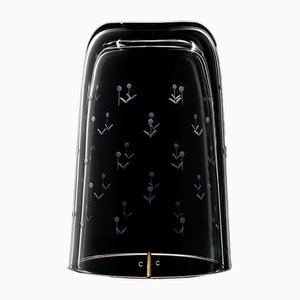
EA 208 Office Chairs by Ray & Charles Eames for Vitra, Set of 8

Alphabet Water Pitcher by Formafantasma
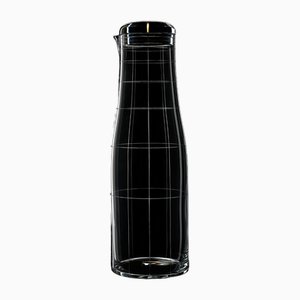
Alphabet Water Glass by Formafantasma

Vintage Black Swivel Chair by Charles & Ray Eames for Vitra
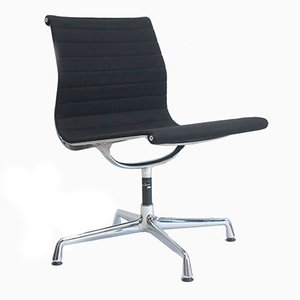
EA 117 Office Chair by Charles & Ray Eames for Vitra
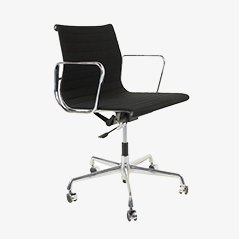
Ring Table Lamp by Jean-Pierre Vitrac for Manade, 1985
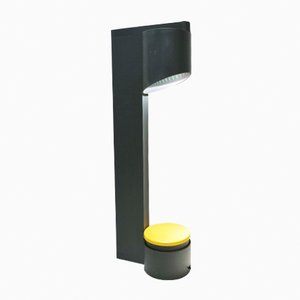
Vintage W.W. Stool by Philippe Starck for Vitra

Model 670 Leather Lounge Chair by Charles and Ray Eames for Vitra, 1970s

EA 108 Office Chair by Charles & Ray Eames for Vitra
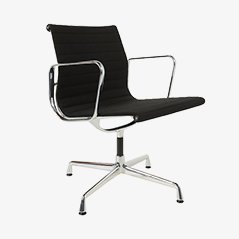
Walnut Model D Stool by Ray Eames for Vitra

Desk Chair by Charles Eames for Vitra, 1980

Wood and Chrome Table by Charles Eames for Vitra
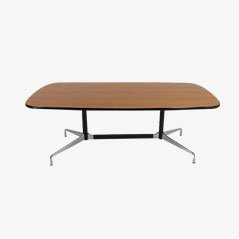
Mid Century Home Desk by George Nelson for Vitra

DSR Dining Chairs by Charles & Ray Eames for Vitra, Set of 4


